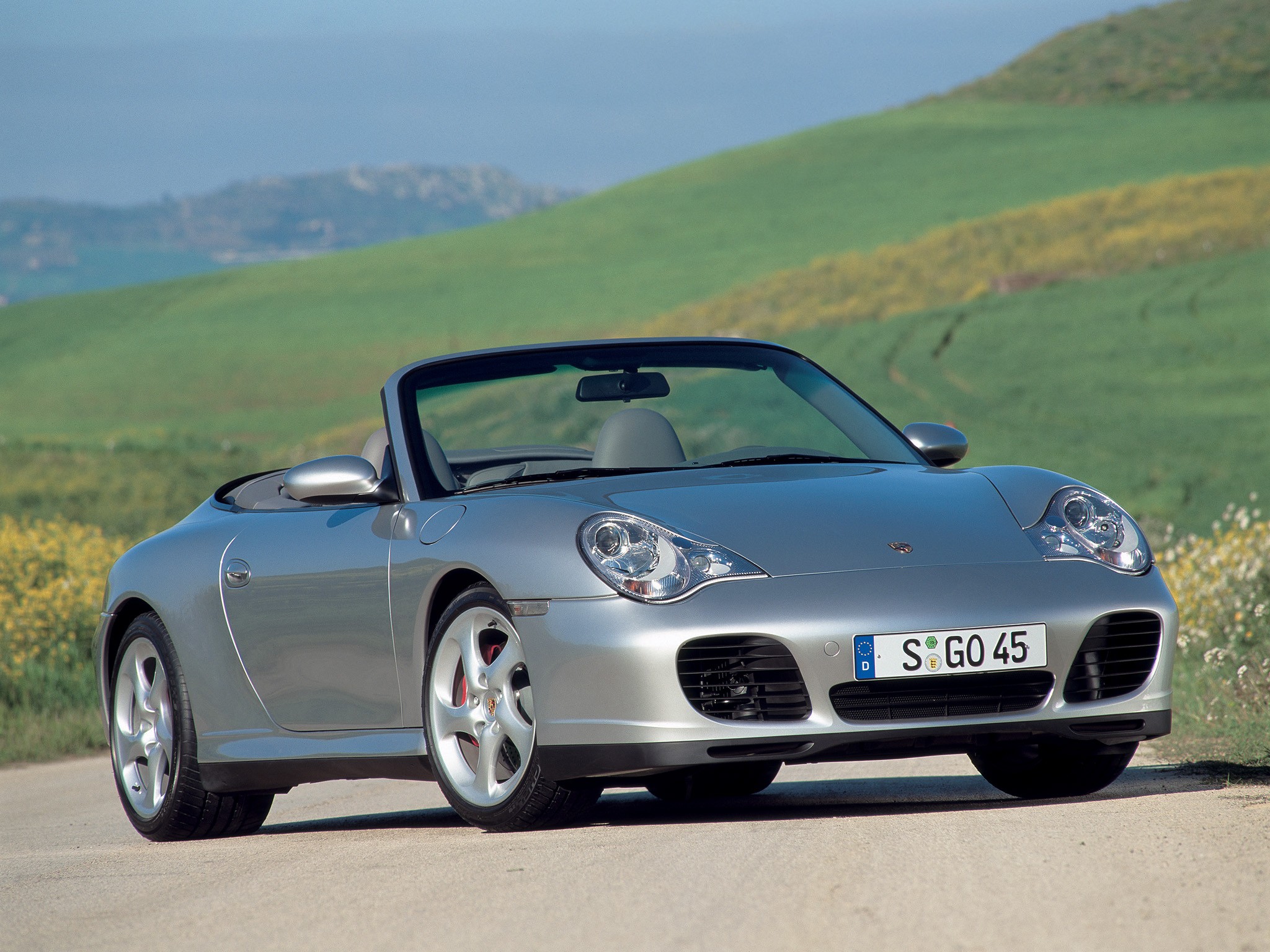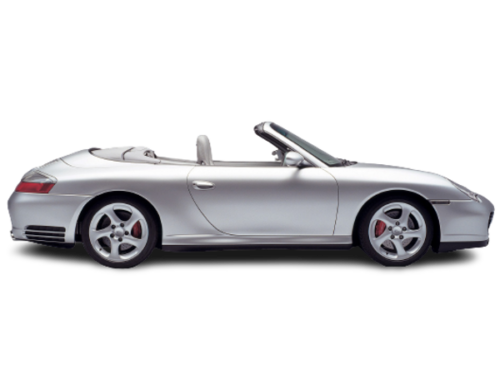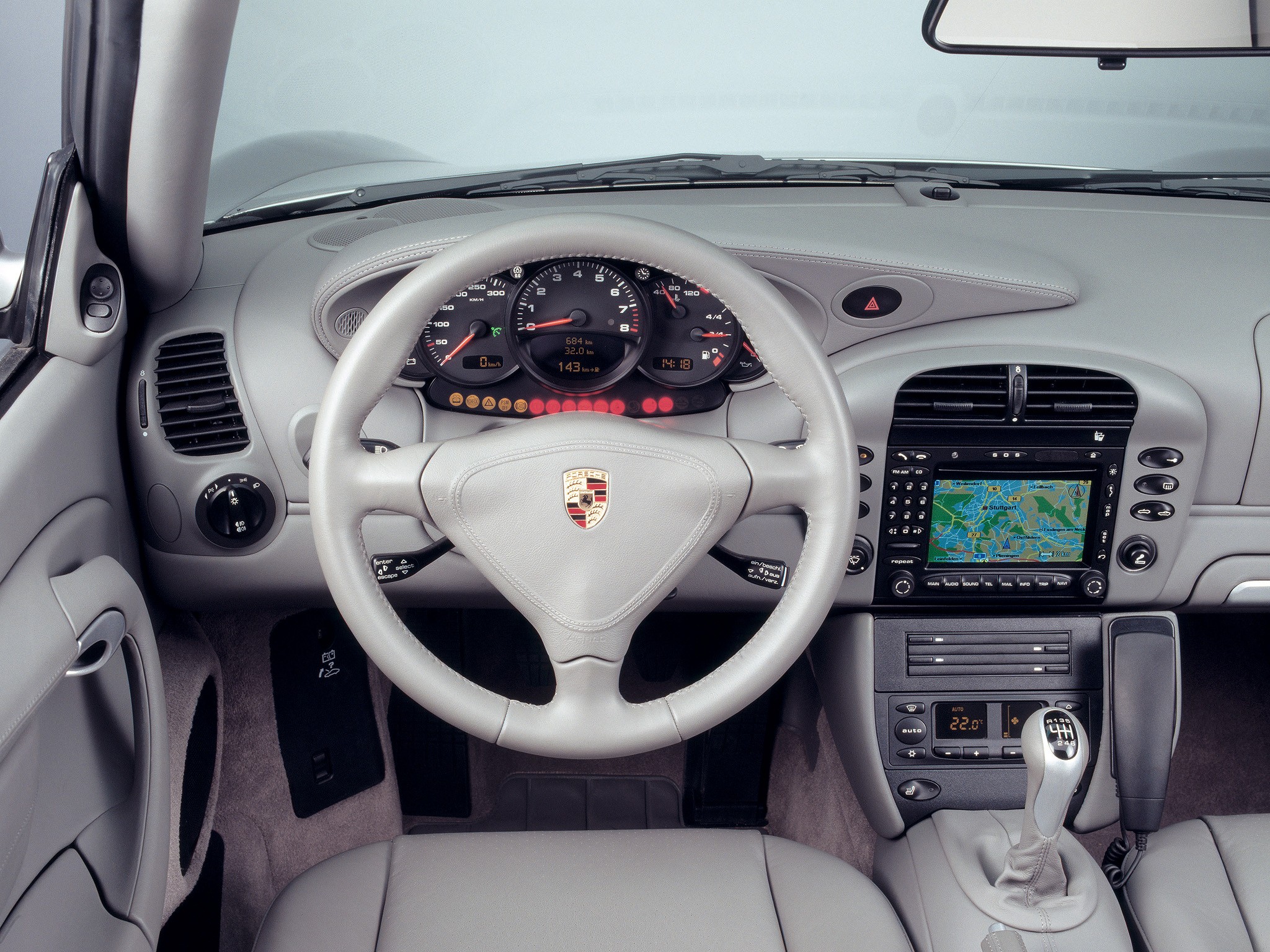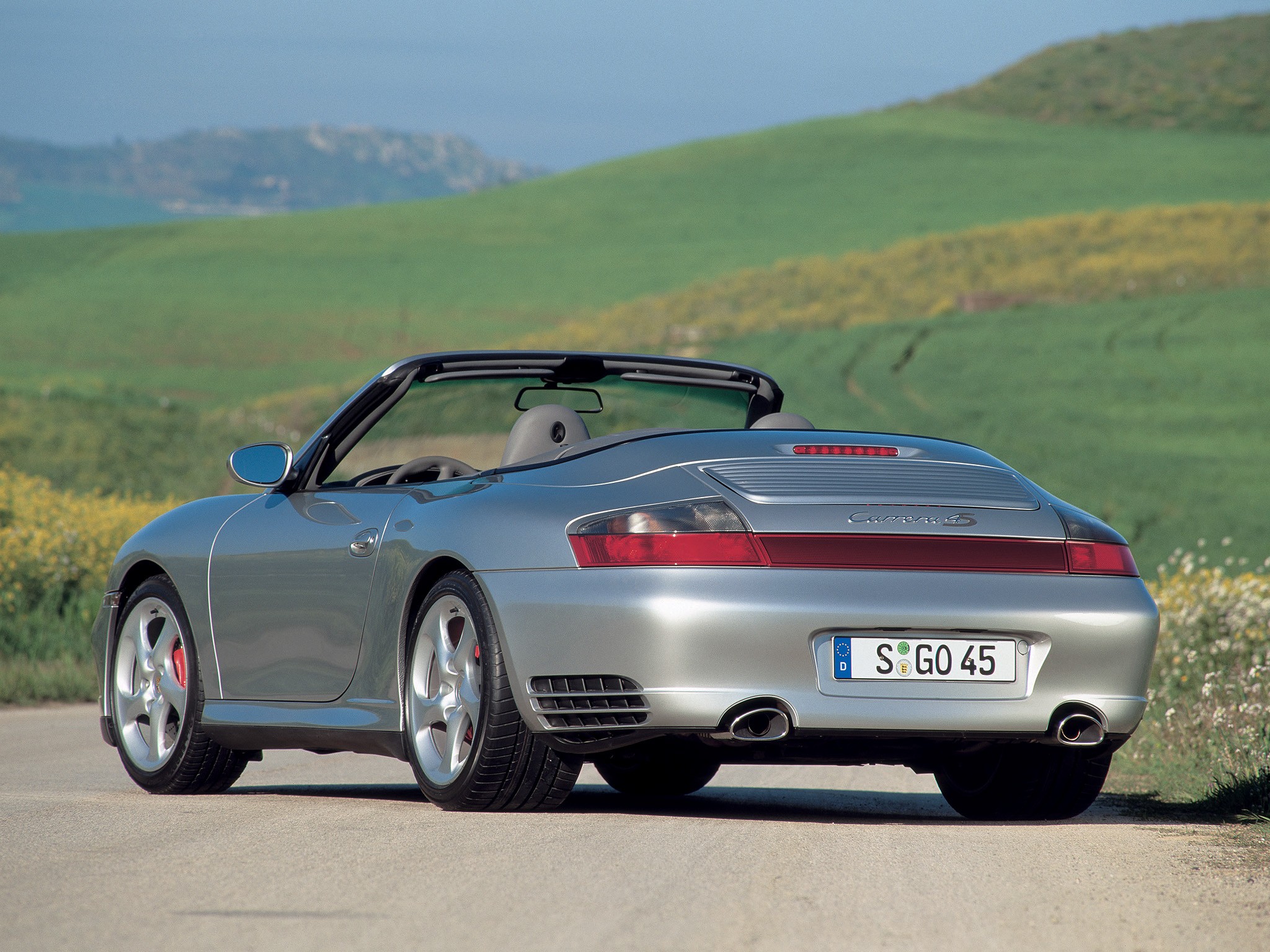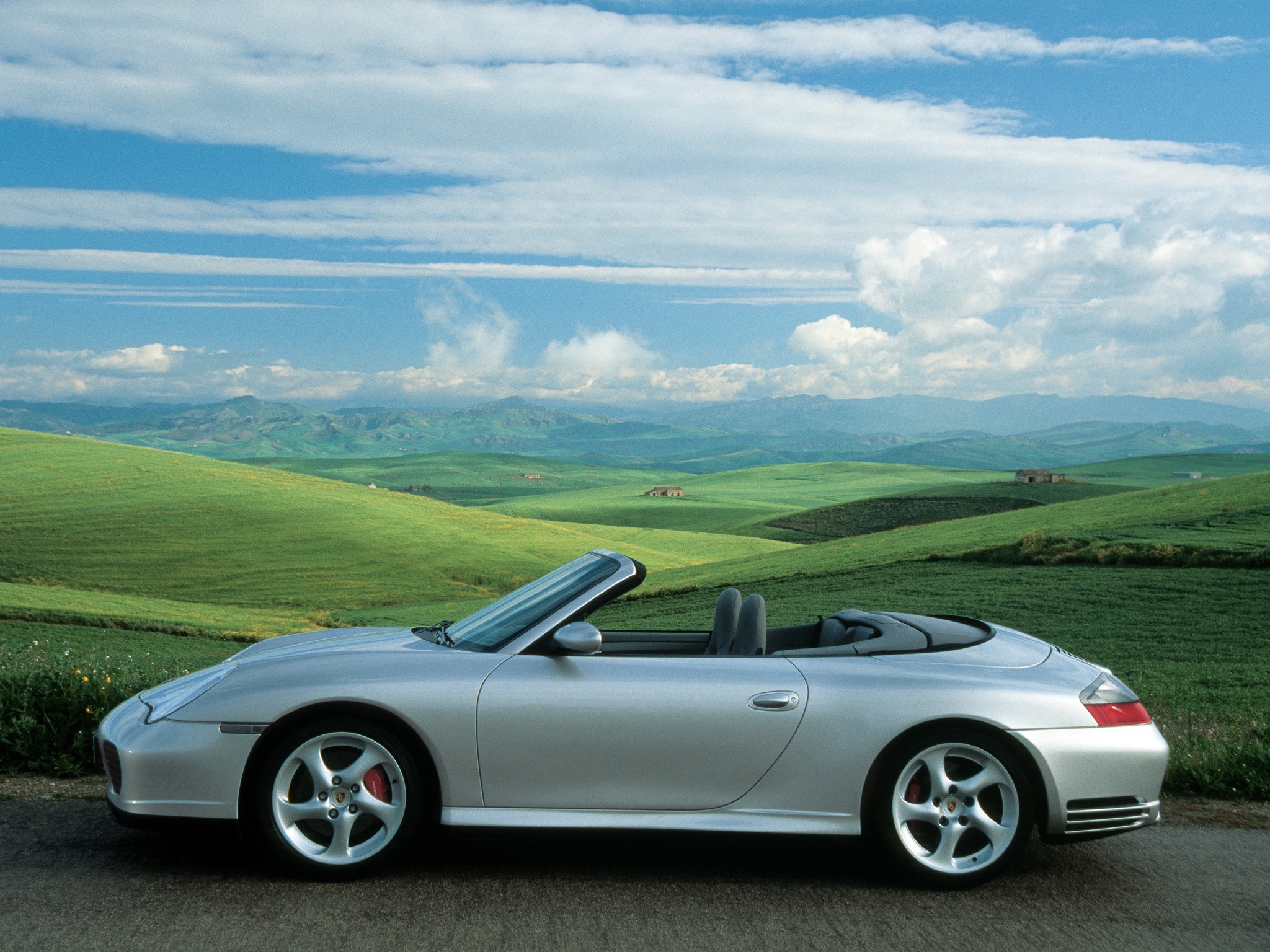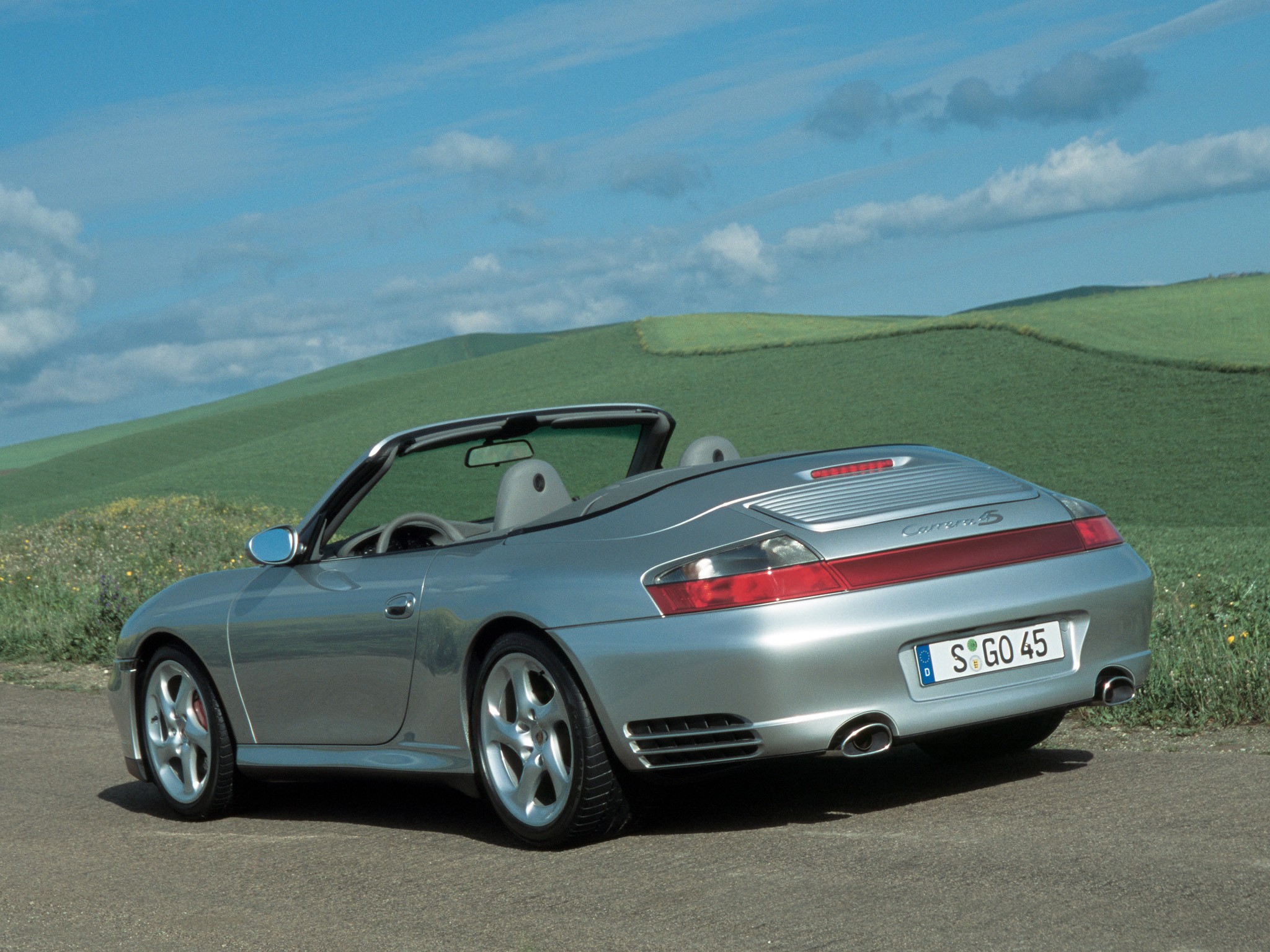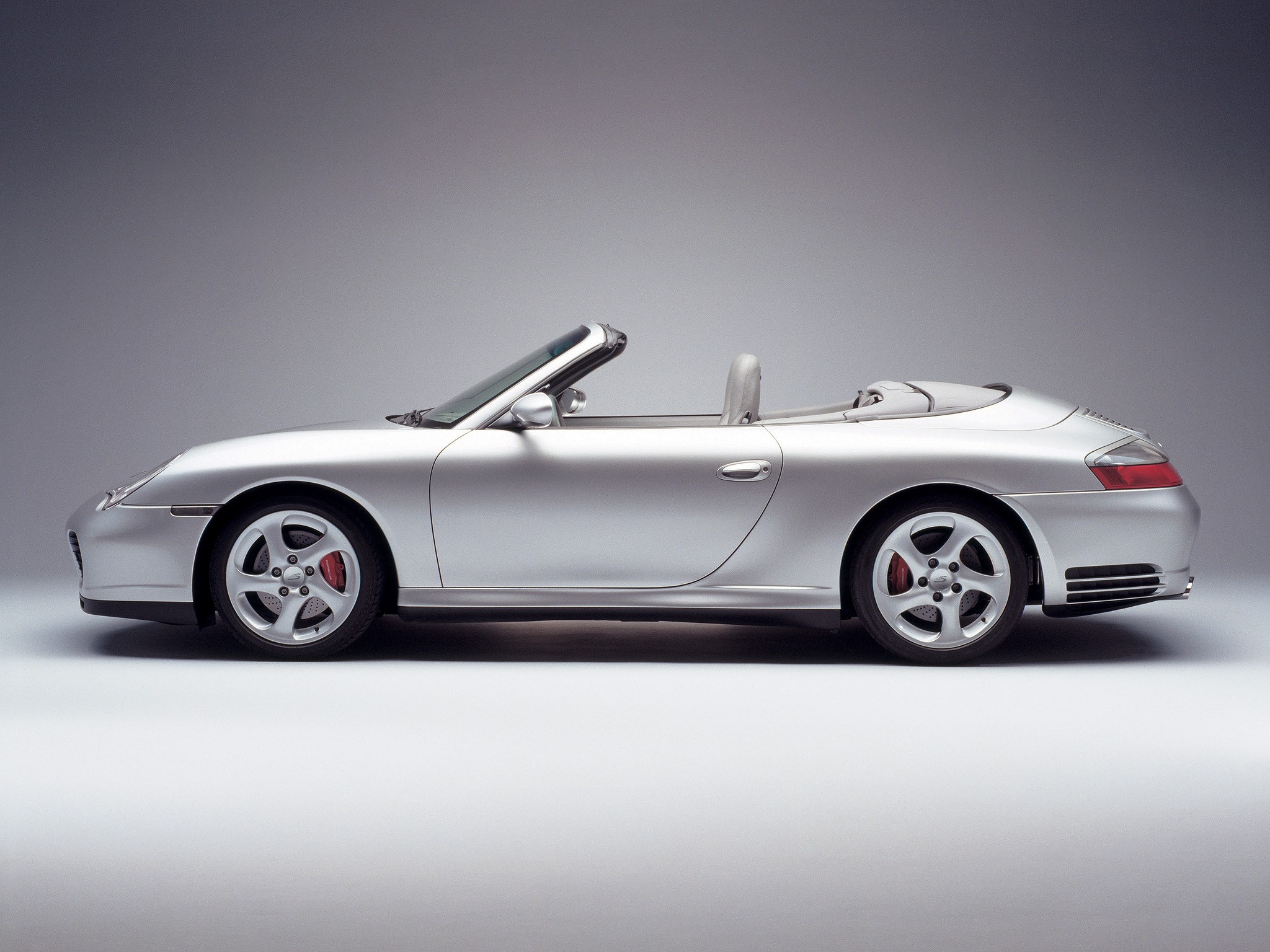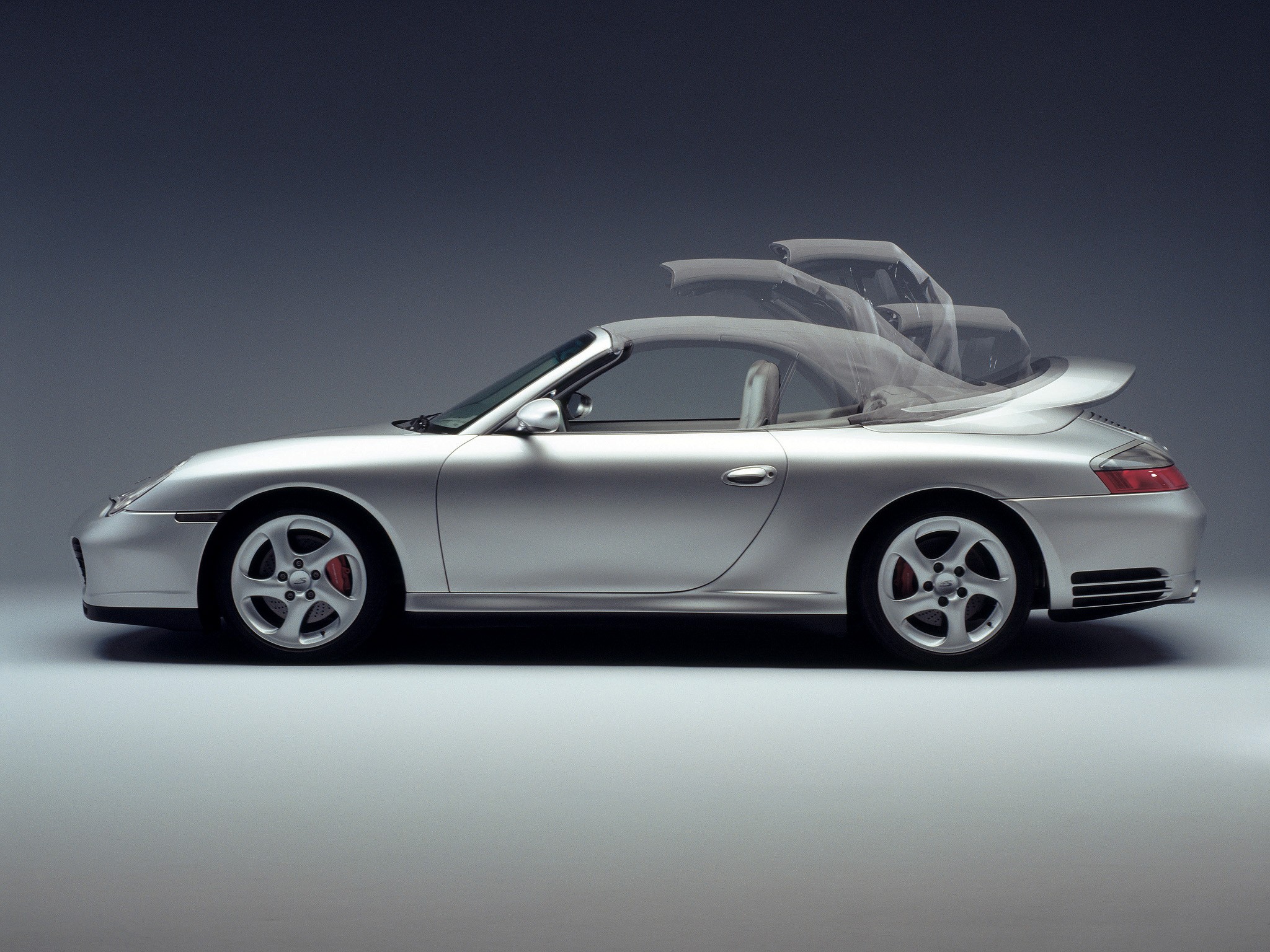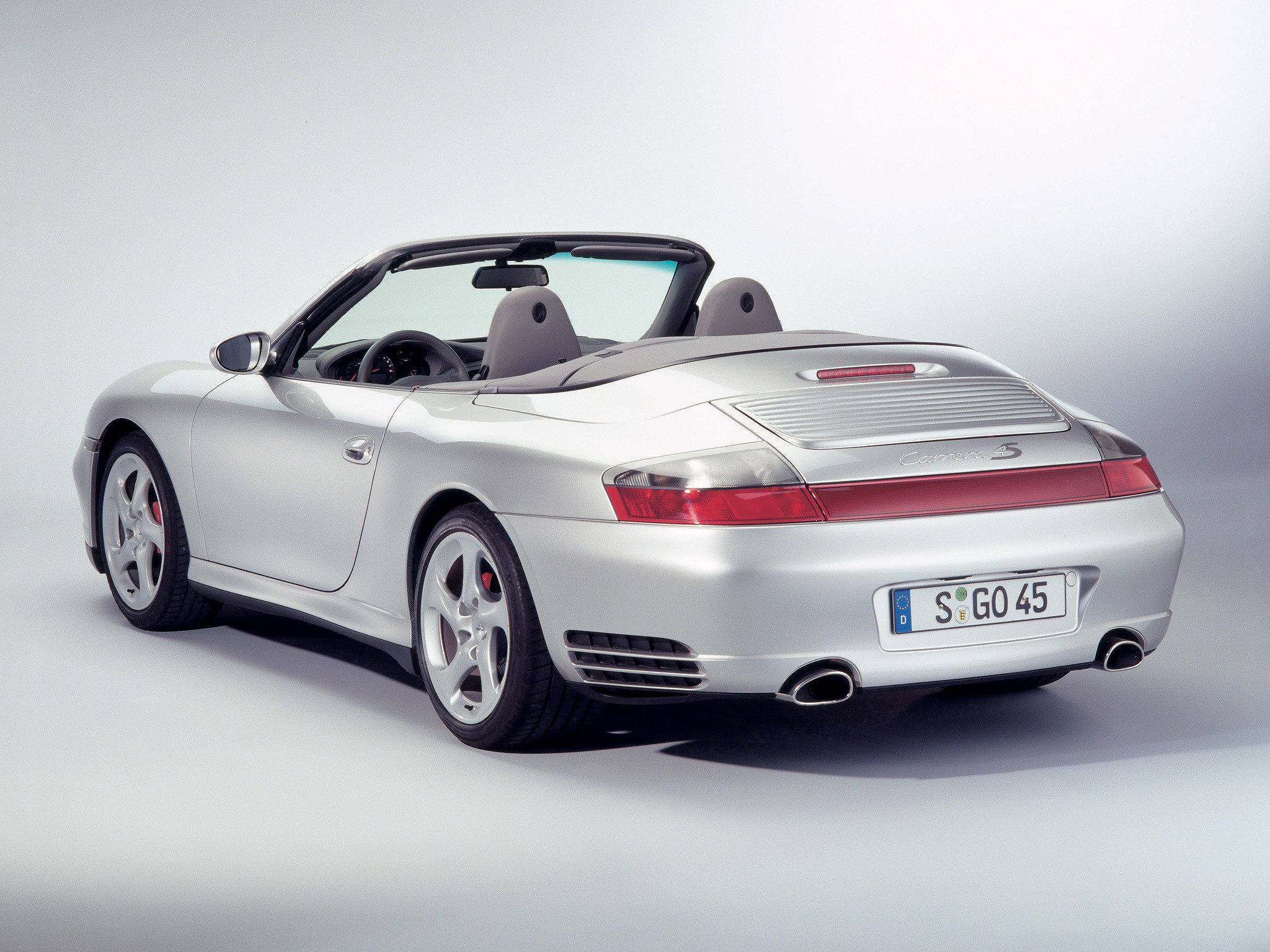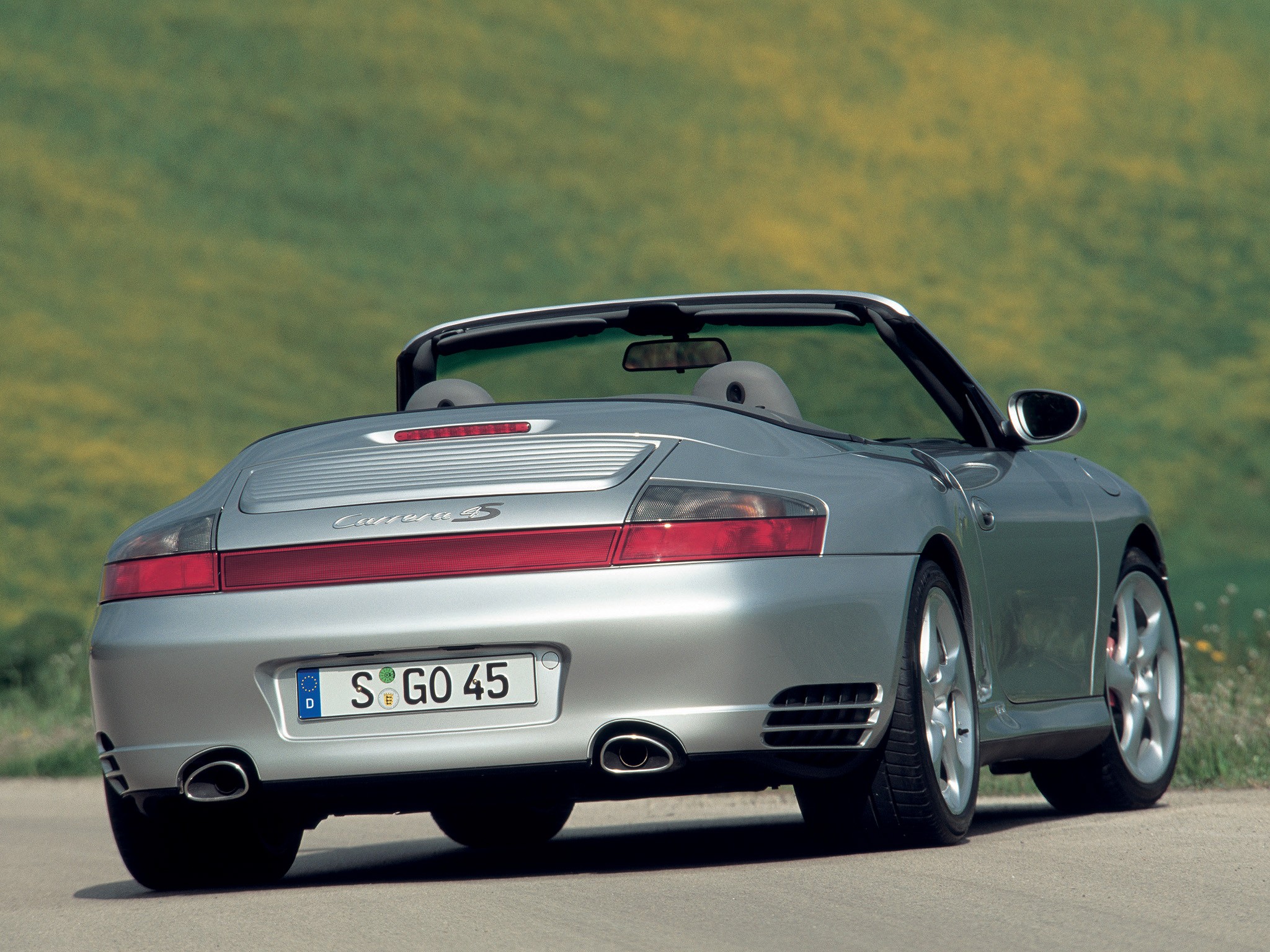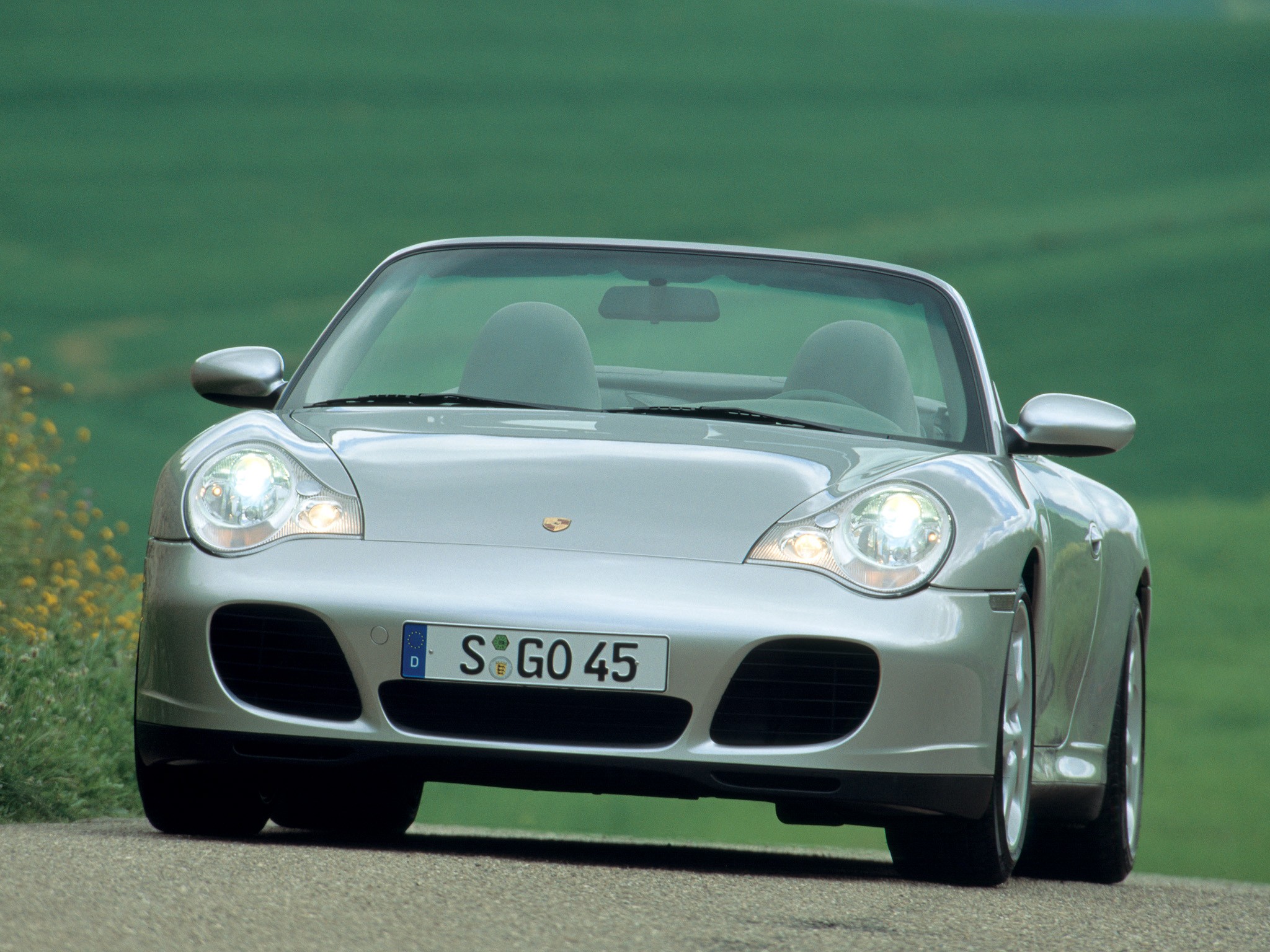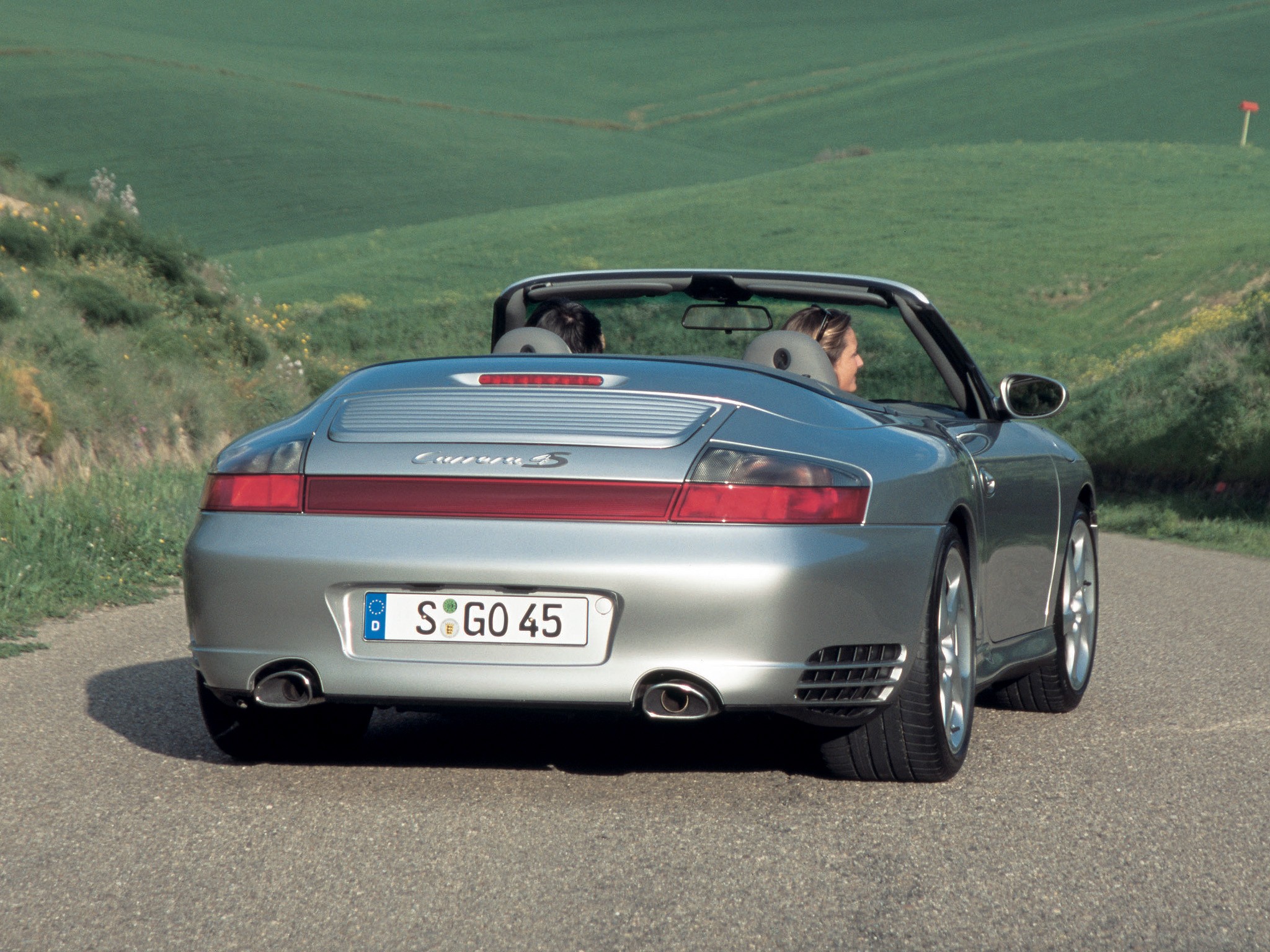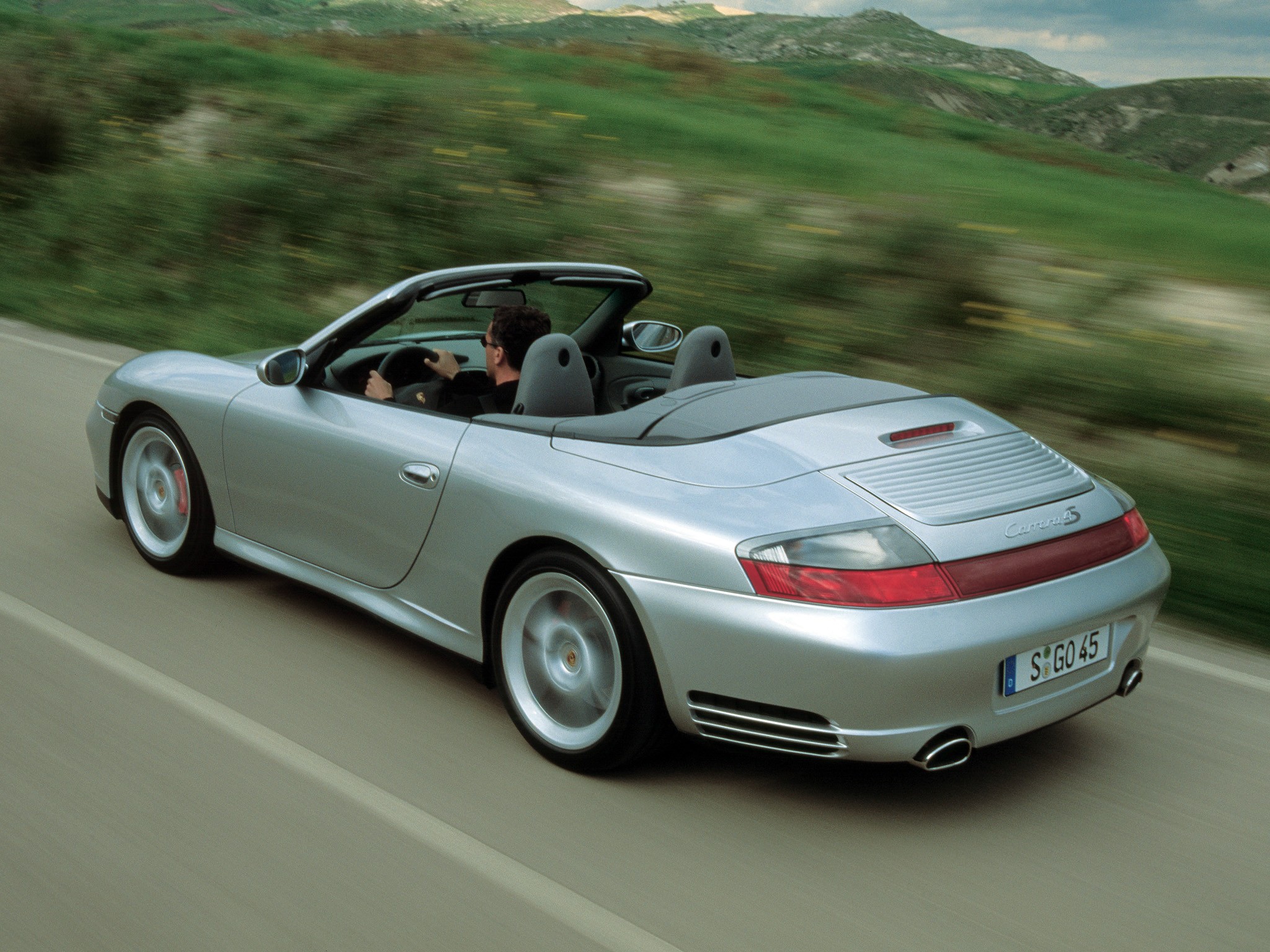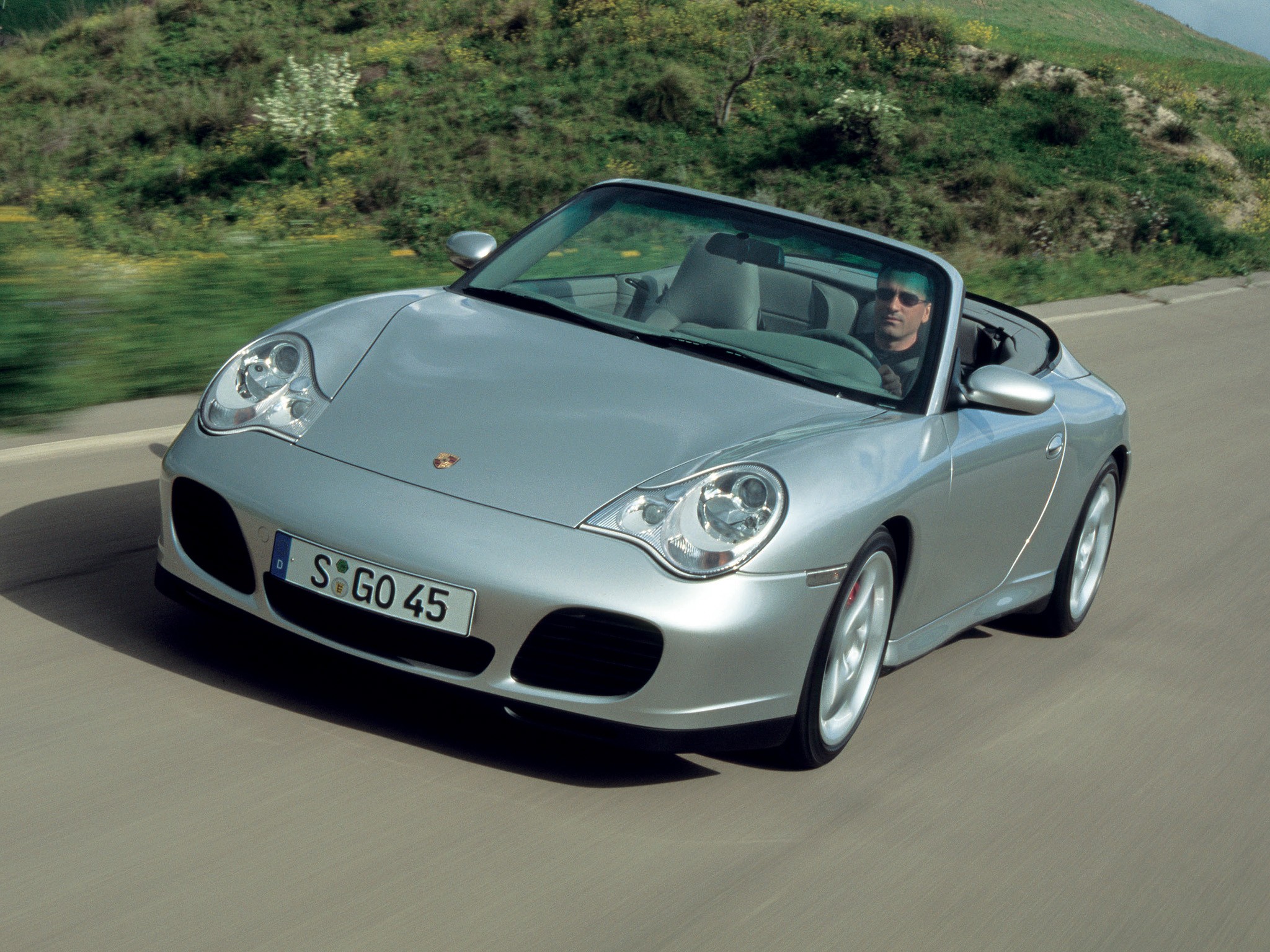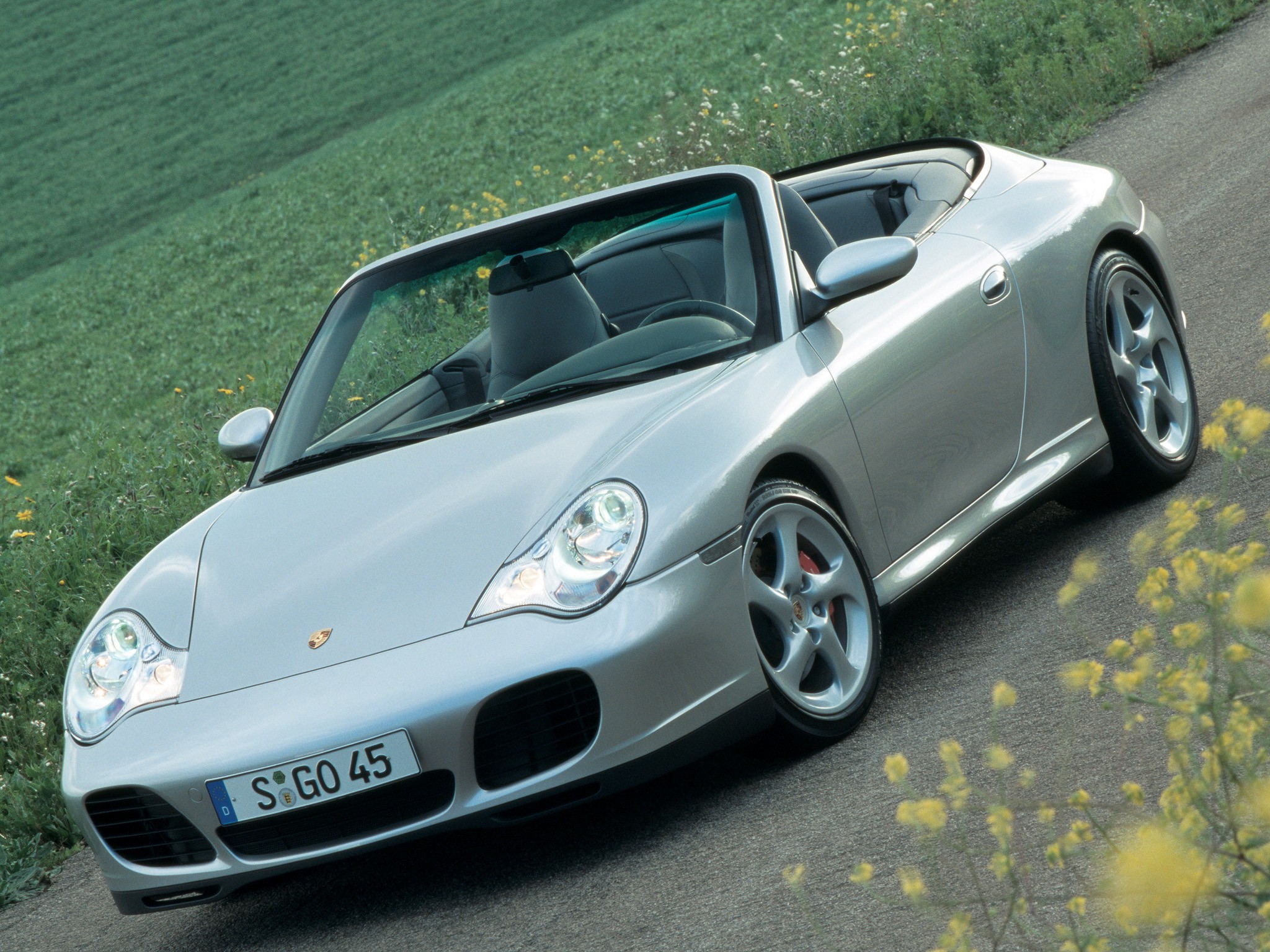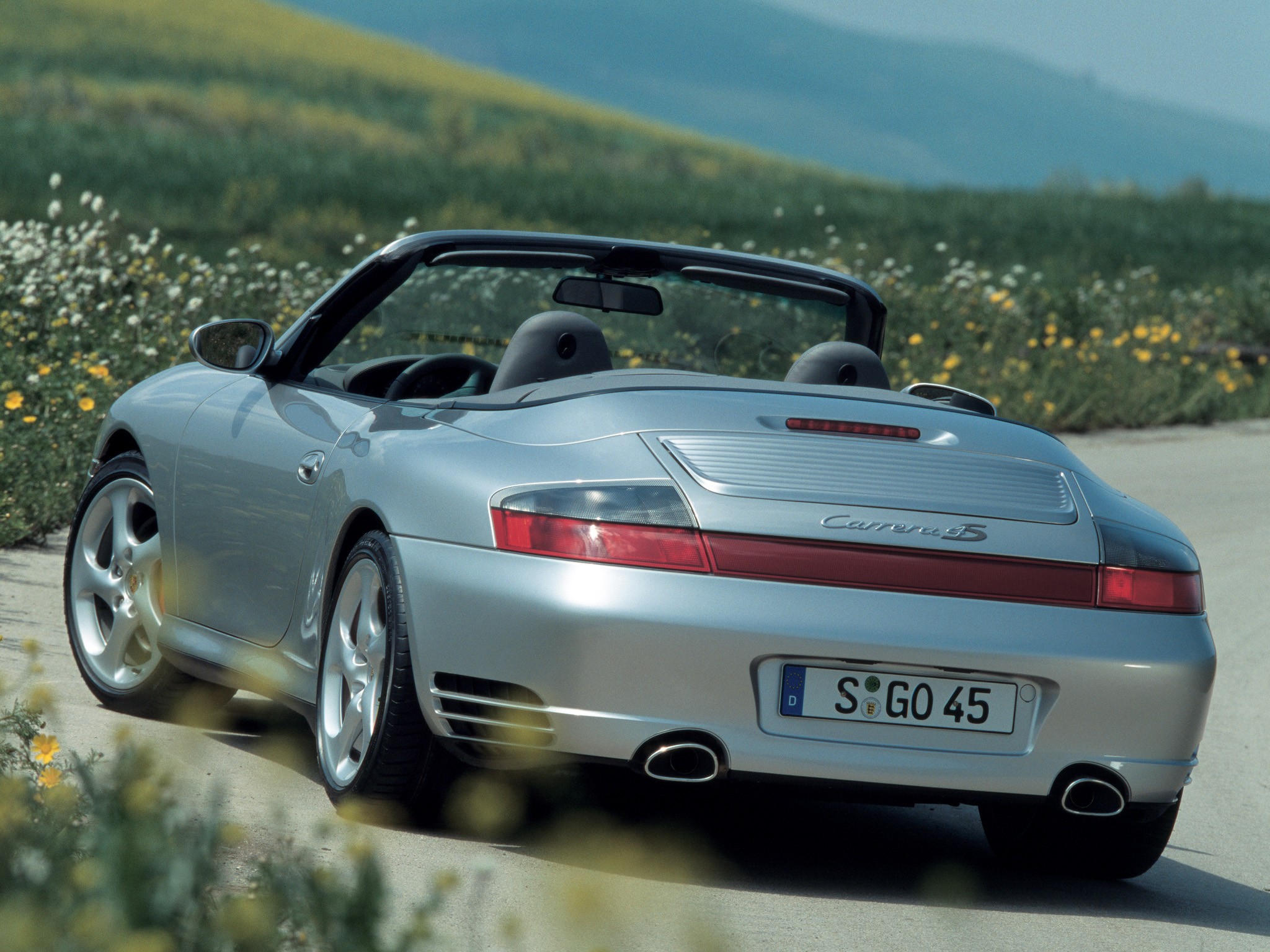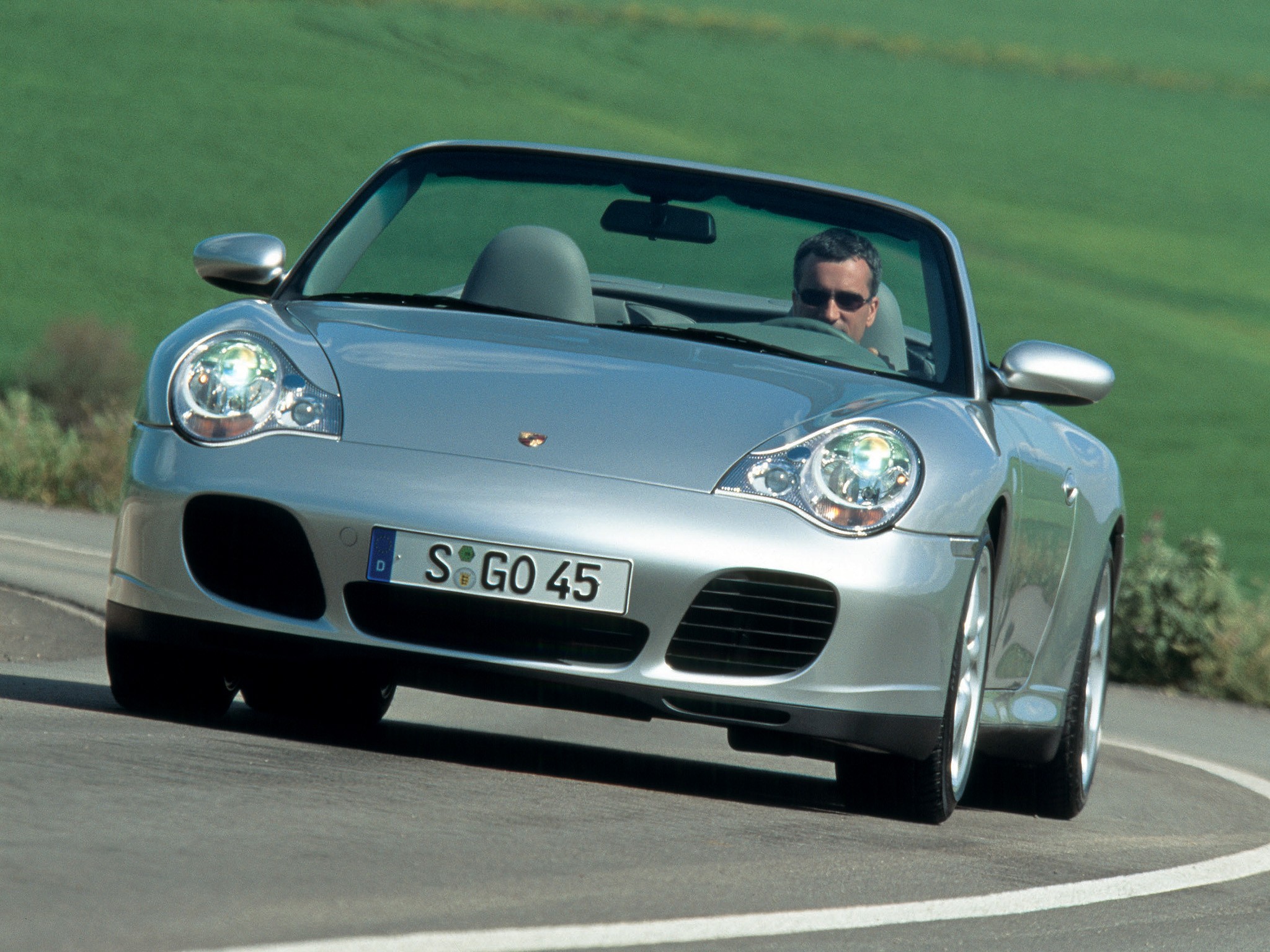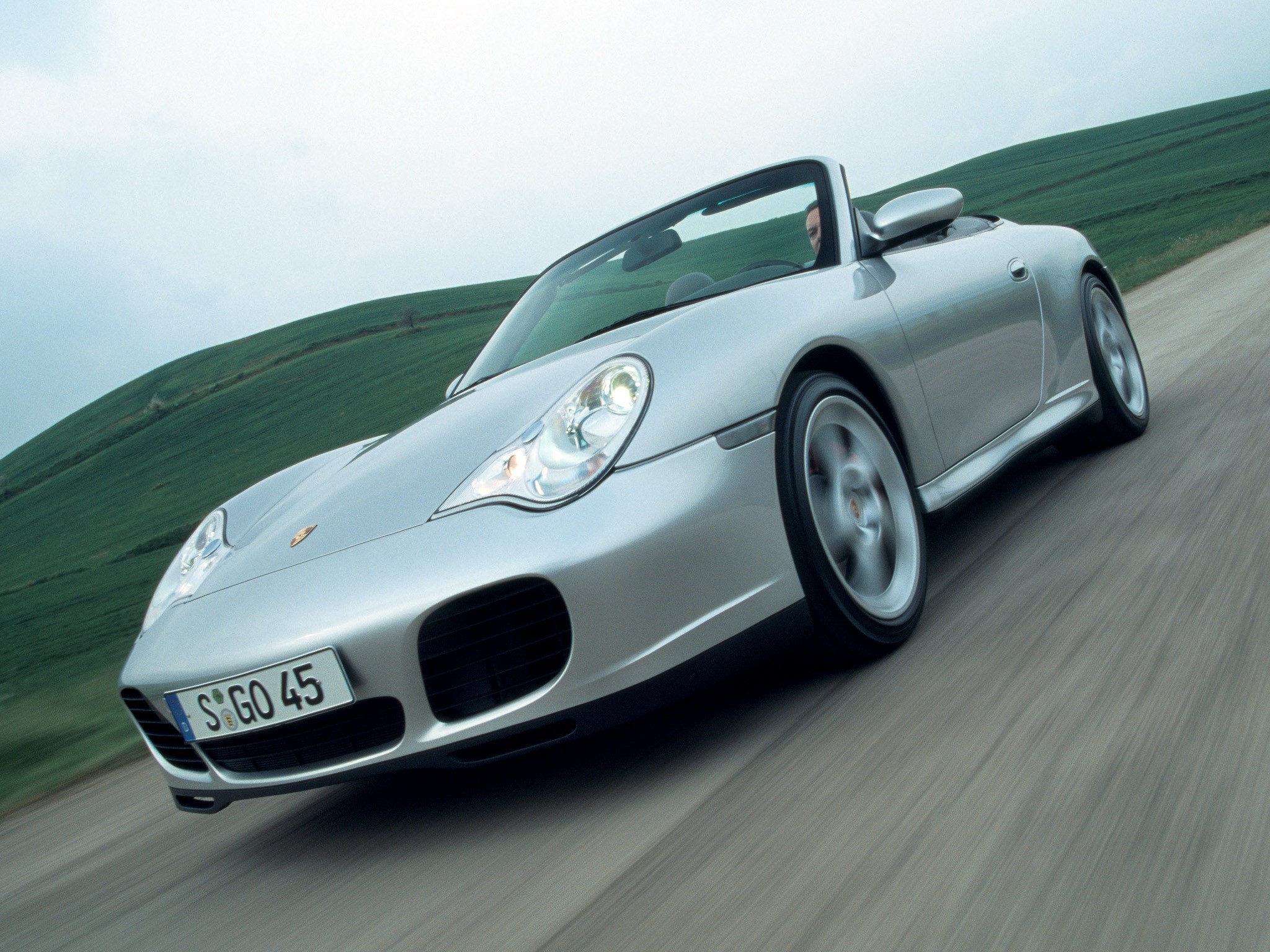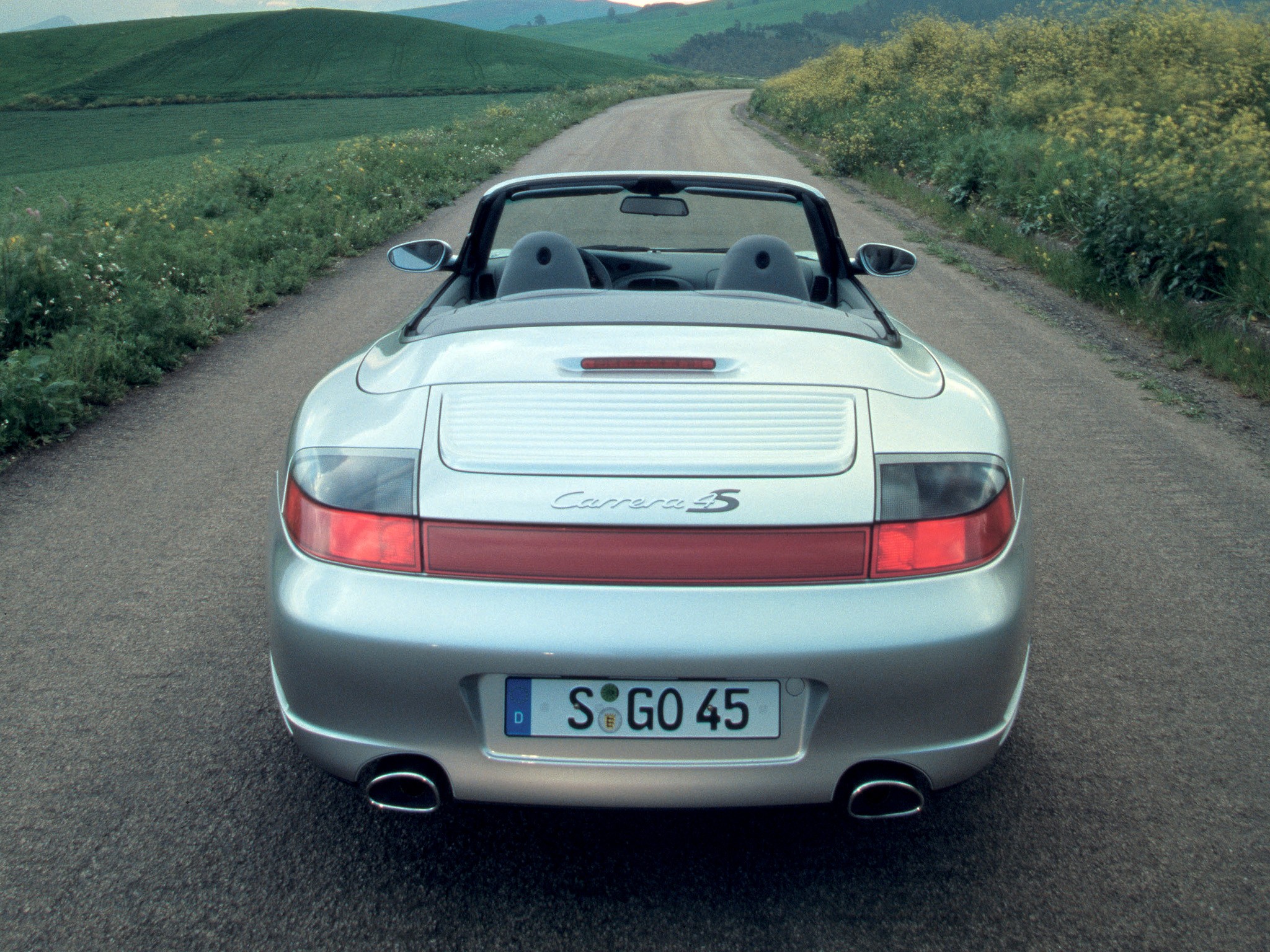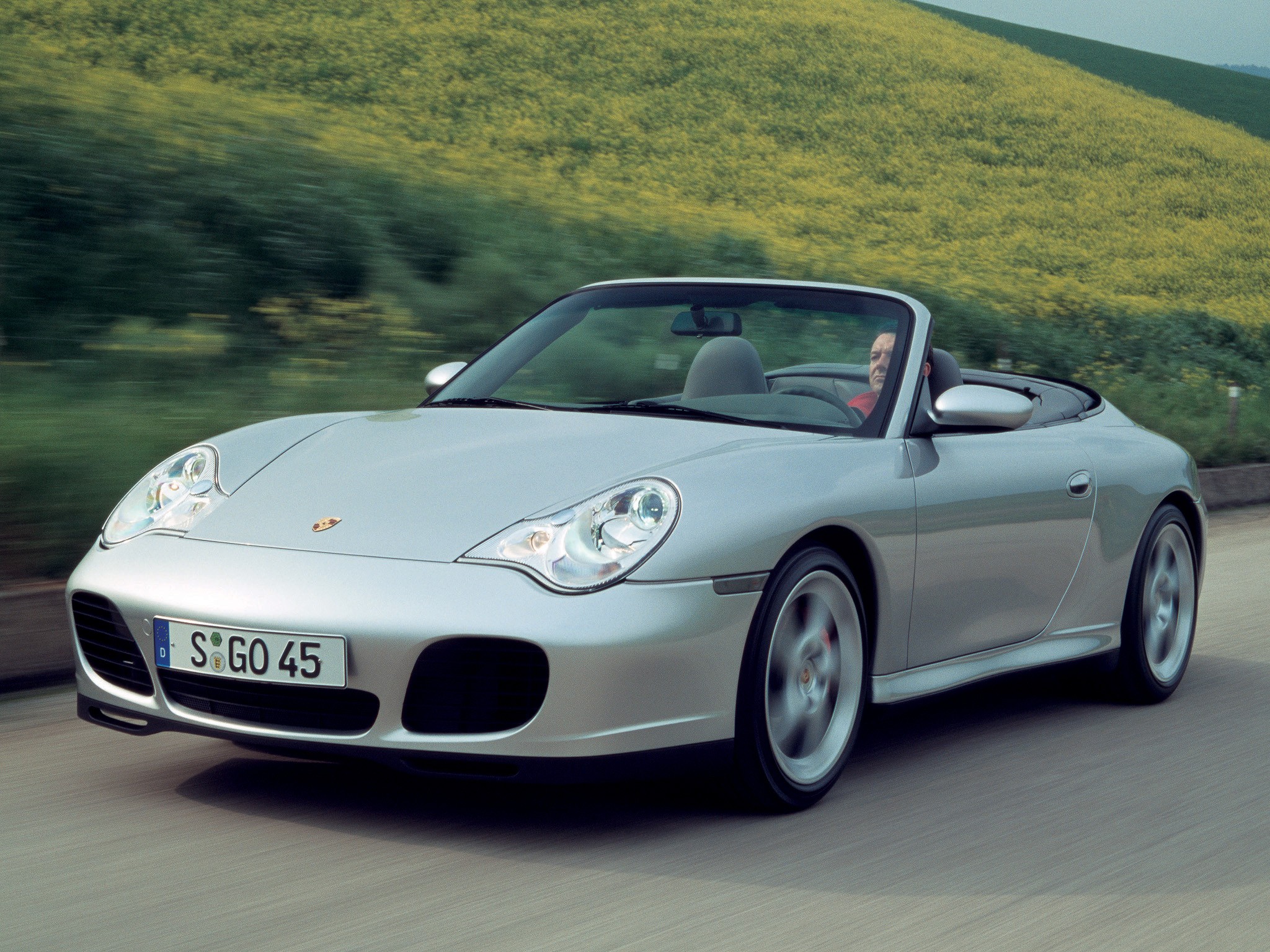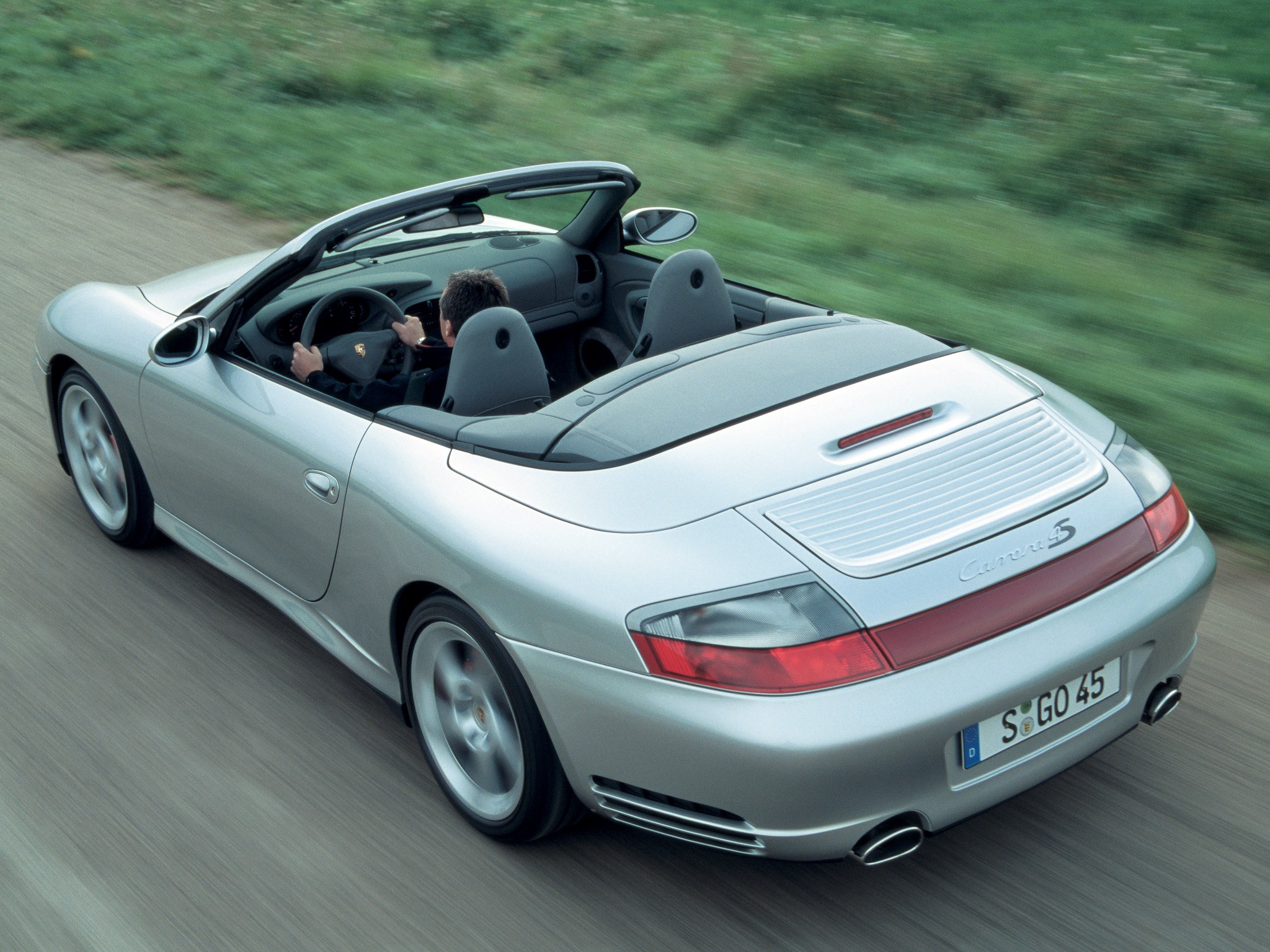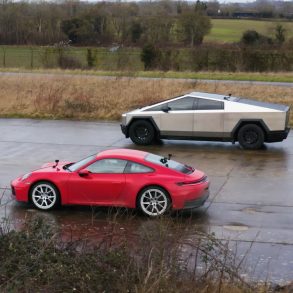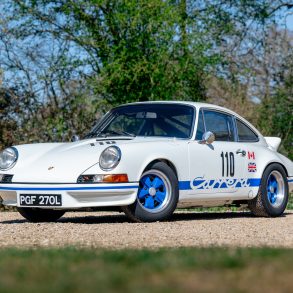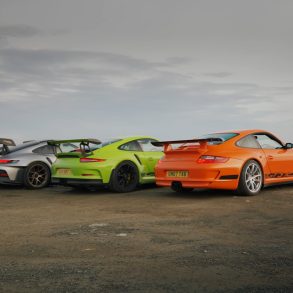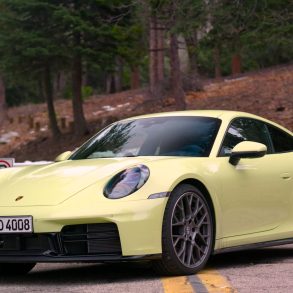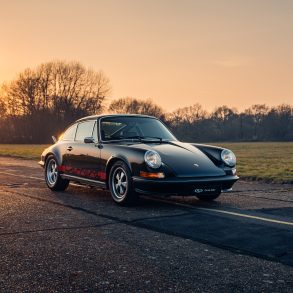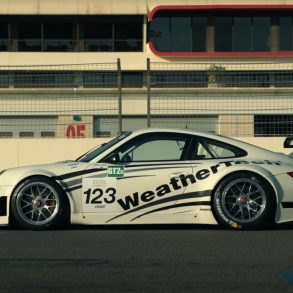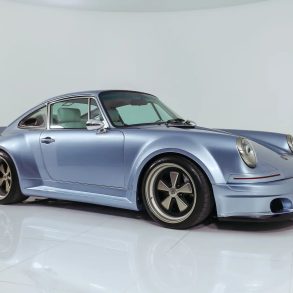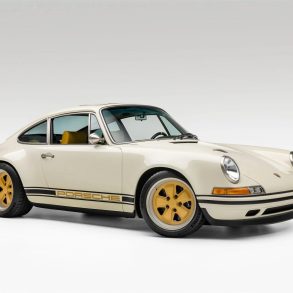(2003 – 2005) Porsche 911 Carrera 4S Cabriolet (996.2) – Ultimate Guide
The 996 Carrera 4S Cabriolet is the convertible version of the slightly-uprated 996 Carrera 4. Introduced a year after the 996 C4S Coupe, it is also mechanically similar to the standard Carrera 4 with a naturally-aspirated M96 and all-wheel drive. However, the Carrerra 4S Cabriolet used the wider bodyshell of the 996 Turbo for a more aggressive look and it uses a stiffer suspension which led to better handling. Available between 2003 and 2004, a total of 5,757 Porsche 996 Carrera 4S Cabriolets were produced. The 996 C4S family were replaced by the 997.1 Carrera 4S for model year 2006.
In 2002, the entire generation of the Porsche 911 – 996 was facelifted. The Carrera 4S Cabriolet was introduced in the lineup with the new engine and the Turbo bodywork. There were not too many all-wheel-drive convertibles in 2002, and for sure there were only a few that could boast up to 320 hp. The Carrera 4S, introduced for the first time in 2002, was launched to fill the gap between the regular Carrera 4 and the Turbo.
From the outside, the Carrera 4 S Cabriolet featured the same front bumper as the Turbo. The rear wide fenders looked almost the same, except the side air-intakes, which were not needed. The sloped back of the car was fitted with the same self-adjusting spoiler, that could deploy or retract depending on the speed. The three-layer canvas-top was powered and it needed 20 seconds to completely retract or cover the car, at speeds up to 50 kph (31 mph). For winter, the car featured an aluminum hard-top.
Inside, the car featured full power-adjustable leather seats for the driver and passenger (with driver’s side memory). The seat’s position was related to the key used to open the car so, if two drivers would use the vehicle, at the opening the door mirrors and the seat was adjusted accordingly. A new infotainment unit (Porsche Communication Management) was installed, with an option for sat-nav.
The drivetrain received a new 3.6-liter engine and it gained 20 hp more than the non-facelifted version. It was fitted with a standard 6-speed manual. The 5-speed automatic (Tiptronic) gearbox with manual override to change gears was on the options list. Due to its all-wheel-drive system, it could cope better with the bad weather than most of the sports-cars from that era.
Pictures
Press Release
The Porsche 911 Carrera 4S has been the car of choice for the enthusiast driver who appreciates the performance provided by Porsche’s 315 horsepower (SAE), normally aspirated six-cylinder “boxer” engine, but wants the look and feel of the higher-performance Porsche 911 Turbo. For 2004, the Porsche 911 Carrera 4S Cabriolet takes its place alongside the popular Porsche 911 Carrera 4S Coupe in the Porsche lineup.
Porsche believes form must have function, and with its wider stance and the added capabilities that come with all-wheel drive, the “look and feel” of the Carrera 4S provide very real dynamic enhancements.
Cabriolet top goes up or down in 20 seconds
The 2004 Porsche 911 Carrera 4S Cabriolet comes with a fully automatic three-piece top that opens in a Z-configuration and folds down into a compartment behind the rear seat. Unlike most cabriolet tops that expose the inside of the roof lining when the top is retracted, Porsche’s Z-configuration keeps the inside of the roof protected at all times, takes up less space when the top if stowed, and provides better protection for the heated rear glass window when the top is down.
The Cabriolet top is made of a high-quality fabric, with a special plastic material between the outer and inner layers providing superior sound insulation and heat protection.
A light but stable aluminum frame helps keep the structure stable and resistant to ballooning, even at very high speeds, and applies tension to the section of the roof between the windshield and the first bracket. The top has been tested in a wind tunnel at speeds of nearly 210 mph (338 km/h) without problems.
The roof is fully automatic, operated by a hydraulic system and electric motors that lock the front roof bracket to the windshield frame. A microcomputer masterminds the smooth flow of all functions opens and closes the top in 20 seconds.
Wind deflector, hardtop are standard on Cabriolet
All 2004 Porsche 911 C4S Cabriolets come with both a standard wind deflector and an aluminum hard top. The wind deflector, made of two frames covered by a net fabric, extends over the area between the front seats and the supplemental safety bar cover and ensures a draft-free driving experience when the top is down. The wind deflector can be installed or removed in a matter of seconds and can be stored in the front luggage compartment.
The aluminum hard top is made from two shells riveted together and includes a parcel shelf that helps reinforce its structure. The hard top has a heated rear glass window, yet weighs only 71 pounds (32 kg), making it easy for a driver and passenger to install when they want the security of a hard roof over their heads.
Turbo stance and enhanced dynamics
While drawing its power from the same normally aspirated engine as the 911 Carrera Coupe, Cabriolet, Targa and Carrera 4 Cabriolet, the 2004 Porsche 911 Carrera 4S Coupe and Cabriolet share the structure, all-wheel-drive chassis and upgraded content with the Porsche 911 Turbo and Turbo Cabriolet.
Like the Porsche 911 Turbo, the Porsche 911 Carrera 4S is 2.3 inches (60 mm) wider in the rear compared than the Porsche 911 Carrera models. The wider fenders accommodate massive 295/30R-18 rear tires on standard Turbo-style wheels, and those wheels provide a good view of the red-painted brake calipers that the Carrera 4S also shares with the 911 Turbo.
As on the Turbo, three large dark-finish intake grills dominate the lower front fascia. Optional Bi-Xenon headlights use high-intensity gas discharge bulbs for both the low and high beams.
Instead of the Turbo’s fixed rear wing, the Carrera 4S retains the automatically deploying rear spoiler of the 911 Carrera Coupe and Cabriolet. The spoiler deploys when the car reaches 75 mph (121 km/h) and retracts at 50 mph (80 km/h). As an example of Porsche’s attention to detail, the slightly raised center section of the rear spoiler helps aerodynamically compensate for this model’s different weight and weight distribution as compared to the Turbo.
The Carrera 4S does not need the larger front lip spoiler or side intake ducts used to help draw air for the Turbo’s intercoolers. It also has a unique, glass-reinforced plastic rear deck lid that features a reflector strip between the taillights.
All-wheel drive and standard PSM
Weighing just 120 pounds (54 kg), the all-wheel-drive system that the Porsche 911 Carrera 4S Coupe and Cabriolet share with the 911 Turbo is one of the lightest such systems in the auto industry. This proven system is based on a viscous multi-plate clutch located directly behind the front differential. The system directs torque to the front wheels at a rate that varies from five to 40 percent, depending on available traction and power applied. The viscous unit compensates for differing wheel speeds during cornering. The 911 Turbo exhibits outstanding traction on all road surfaces.
All-wheel-drive, the Porsche Stability Management system (PSM), and standard 18-inch wheels combine to make the Porsche 911 Carrera 4S models among the best-handling Porsches ever produced. Aside from its own specific shock absorber tuning, the Carrera 4S shares the 911 Turbo suspension, including its engine mounts and longer rear control arms. The Porsche 911 Carrera 4S also features the 911 Turbo’s larger-diameter brake rotors.
Turbo-style features
The Porsche 911 Carrera 4S shares the additional standard luxury content of the 911 Turbo, including full power-adjustable leather seats for the driver and passenger (with driver’s side memory), programmable remote entry, and a security system with alarm and immobilizer. The driver can control the seat memory and open the luggage compartment remotely. The remote unit recognizes which of the four car keys is in use and transmits the information for driver’s seat position and exterior mirrors to the memory control unit. Apart from the function provided by the four programmable keys, the driver can select two other seat positions via memory buttons to the left of the seat.
New options and colors for 2004
New for 2004, the Carrera 4S offers four new options: a new Aerokit, the Porsche Ceramic Composite Brake (PCCB) system, 18-inch SportTechno wheels and 18-inch Porsche 911 GT3 wheels.
The 2004 Porsche 911 Carrera 4S also comes in two new colors: Atlas Gray metallic and Carmon Red metallic. As with the Turbo, the Carrera 4S offers metallic paint choices at no extra cost.
0 to 60 mph in only 5.2 seconds
The 2004 Porsche 911 Carrera 4S Coupe and Cabriolet are powered by Porsche’s 3.6-liter, 315 horsepower (SAE), horizontally opposed six-cylinder “boxer” engine. That engine propels the Coupe from a standing start to 62 mph (100 km/h) in only 5.2 seconds when equipped with the standard six-speed manual transmission. The slightly heavier Cabriolet needs only 5.3 seconds to complete the same feat. Acceleration times are marginally slower for cars equipped with Porsche’s optional Tiptronic S five-speed automatic transmission.
This engine employs Porsche-patented VarioCam Plus technology and Motronic ME 7.8 engine management controls to provide power and efficiency. The liquid-cooled engine is rated a 315 horsepower (SAE) at 6,800 rpm and at 273 lb.-ft. of torque at 4,250 rpm. A dual-stage resonance air intake system helps the engine provide 214 lb.-ft. of torque at as few as 2,000 rpm and at least 236 lb.-ft. from 2,500 to 7,000 rpm, with a mid-range torque “plateau” of at least 265 lb.-ft. from 3,800-6,000 rpm.
Powerful, but also efficient
The Porsche 911 Carrera 4S Coupe and Cabriolet can achieve a top test-track speed of 174 mph (280 km/h), yet when run through the six-speed manual transmission, their fuel-efficient engines are rated at 17 mpg city (14 liters/100 miles) and 24 mpg highway (9.4 l/100km). Fuel economy figures are marginally dencreased when the Porsche 911 Carrera 4S is equipped with the five-speed Tiptronic S automatic transmission.
Rear-engine architecture has proud heritage
The Porsche 911 Carrera 4S offers 2+2 seating and Porsche’s classic rear-engine vehicle architecture, which Professor Ferdinand Porsche championed when he created the original Volkswagen. Dr. Ferdinand “Ferry” Porsche, Professor Porsche’s son, improved this basic platform when he created the 356, which was powered by an air-cooled four-cylinder engine. This revolutionary car was the foundation of the Porsche sports car company we know today.
The 1964 Porsche 911 Carrera introduced the company’s first six-cylinder “boxer” engine, a 2-liter unit that produced 148 horsepower and 129 lb.-ft. of torque.
VarioCam Plus boosts engine’s performance
In 1999, Porsche introduced its newest family of six-cylinder, horizontally opposed “boxer” engines. Since then, the engines used in the 911 Carrera models have been equipped with a new crankshaft, pistons and connecting rods, and displacement has been increased to 3.6 liters. Porsche’s patented VarioCam Plus intake valve timing and lift system further enhance its output. Patented LOKASIL high-silicon cylinder liners help reduce friction and wear to such a level that Porsche recommends a 15,000-mile (24,000 km) oil change interval and a 30,000-mile (48,000 km) oil filter change interval.
The latest version of VarioCam Plus adjusts camshaft position to provide continuously adjustable intake valve timing and also incorporates two camshaft profiles and two sets of tappets to vary both intake valve lift and duration. This system helps “flatten” and smooth out the torque curve, while helping to reduce emissions.
Motronic ME 7.8 keeps everything running efficiently
Motronic ME 7.8 engine management controls instantly calculate the precise supply of fuel needed from the tank. Formerly, fuel not needed by the injectors – but heated by the engine – went back to the fuel tank. This latest “returnless” system reduces hydrocarbon emissions caused by prematurely heated fuel. Further, sequential multi-port fuel injection features separate fuel mixture control for each cylinder bank, and a coil-on-plug ignition system provides quick response and reliable operation.
The ME 7.8 engine control module incorporates the E-Gas electronic throttle. In place of a traditional throttle cable setup, E-Gas electronically transmits pedal position to the engine control unit.
Low backpressure mufflers emit a powerful sound through the Porsche 911 Carrera 4S’s tailpipes.
Choice of six-speed manual or Tiptronic S transmission
Porsche offers a choice of two transmissions for the 911 Carrera 4S: a precisely shifting standard six-speed manual and the optional Tiptronic S five-speed automatic transmission.
The manual has high-strength steel alloy components that can accept the Porsche 911 Carrera 4S engine’s power. The gearbox’s output shaft runs on three bearings, not two as is the practice of many automakers, and the differential has strengthened bevel gears. A dual-mass flywheel ensures low vibration, and a hydraulic clutch provides consistent performance.
The Porsche 911 Carrera 4S models adopt the Tiptronic S transmission from the 911 Turbo. The lock-up torque converter and shifting programs have been specially tailored to the naturally aspirated engine.
In automatic mode, Tiptronic S uses infinitely variable shift points to respond to driving circumstances and driving style. During leisurely driving, Tiptronic S upshifts early to provide a quiet ride and the best fuel efficiency. With quicker manipulation of the gas pedal, the transmission responds by raising shift points to hold each gear longer for crisp response and power.
The Tiptronic S transmission draws from among 250 different shift maps to provide optimal performance at all times. Even in automatic mode, the computer-controlled Tiptronic S responds like a driver working a manual transmission, downshifting or holding lower gears when cornering and driving on hills. Tiptronic S allows the driver to select manual mode by pressing an up- or downshift button, even with the shift lever in the “D” position.
Lightweight suspension enhances handling
The four-wheel independent suspension under the Porsche 911 Carrera 4S features a Porsche-optimized MacPherson-strut design in front and a multilink setup in the rear, each using aluminum components to reduce unsprung weight. Front and rear stabilizer bars and gas-charged shock absorbers provide flatter cornering.
Standard power rack-and pinion steering yields a quick 2.98 turns lock-to-lock and a tight 34.8-ft. (10.6-meter) turning circle.
A “staggered” wheel/tire array (wider wheels and wider, lower-profile tires on the rear) contributes to neutral handling. The 2004 Porsche 911 Carrera 4S comes with standard 18-inch wheels made from pressure-cast aluminum alloy with a hollow-spoke design. The wheels measure 8 x 18 inches in front and carry 225/40 ZR 18 tires, and 11 x 18 inches in the rear with 295/30 aspect tires.
Brakes based on Porsche’s motorsports experience
The Porsche 911 Carrera 4S employs the four-wheel vented disc brakes derived from the Porsche GT1 racecar and shared with the 911 Turbo. One-piece (“monoblock”), four-piston brake calipers reduce unsprung weight and improve heat dissipation.
The front and rear discs measure 13 inches in diameter (330 mm), but differ in thickness – 1.34-inches (34 mm) in front and 1.1-inches (28 mm) in the rear. The cross-drilled rotors dissipate heat to maintain braking performance and brake feel even under hard usage. In comparison, the brake rotors on the standard 911 Carrera measure 12.5 inches in diameter and 1.1-inches thick (318 mm x 28 mm) in front and 11.8 inches in diameter and 0.95-inch thick (299 mm x 24 mm) in the rear.
Optional ceramic braking system
The Porsche Ceramic Composite Brake (PCCB) discs are an option on the 2004 911 Carrera 4S. The ceramic composite discs weigh 50 percent less than comparable metal brake discs, reducing unsprung weight by a significant 36.6 lbs. (16.6 kg) and enhancing suspension response.
In conjunction with a new type of brake lining, these ceramic brake discs immediately build up very high and consistent friction throughout deceleration.
Yellow-painted brake calipers tip off the presence of the PCCB system. The PCCB system provides optimal braking performance even under extreme conditions, on dry or wet roads. An extremely hard disc surface and immunity from salt corrosion give the PCCB discs a long service life.
Porsche Stability Management is standard equipment
Porsche Stability Management system (PSM) uses data from several sensor inputs to detect a loss of grip at the front or rear and reduces instability by applying braking to individual wheels and, if necessary, altering engine power. On slippery roads, PSM can help keep the Carrera 4S going in the direction the driver steers. The PSM system operates so quickly that most drivers likely will not feel it make corrections. The driver can disengage PSM with a dashboard switch. However, for safety, PSM will engage under braking and then disengage when the driver lifts off the brake.
While the system provides dynamic handling aid, Porsche cautions drivers that PSM cannot counteract the laws of physics.
Safe by design
A high level of occupant protection comes with the high performance potential of all 911 Carrera models. A patented crumple zone body structure protects a reinforced passenger compartment. Supplementing the three-point inertia-reel seatbelts, the 911 Carrera models have seatbelt pretensioners and load limiters. All new Porsche models include dual front airbags plus the Porsche Side Impact Protection System that includes boron-steel door reinforcement beams, energy-absorbing door panels, and door-mounted side airbags. The 30-liter capacity side bags provide additional protection for the chest, head, and pelvis.
Front child seat system available in all 911s
At a customer’s request, an authorized U.S. Porsche dealer can install a system that deactivates the passenger airbags when a U.S. Porsche-approved child seat is used. The system features a cross brace with belt lock in front of the passenger seat. Buckling the special child seat into this brace deactivates the airbags. To activate the system, the dealer also must reprogram the airbag control module.
Optional parking aid
Optional parking aid with sensors integrated into the front and rear bumper covers can help prevent parking maneuver fender-benders by sounding an audible alert as the car gets closer to an obstacle.
Communicating at the speed of light
Porsche’s Communication Management system (PCM) is an option that comprises tuners, CD player, navigation system, and trip computer, all linked through Media-Oriented Systems Transport (MOST) digital data bus. The MOST system incorporates light-wave conductors that exchange data between the individual components without loss of quality and at ultra-high speeds.
PCM includes a 5.8-inch (147 mm) color screen with its 16:9 aspect ratio and 12-position keyboard for easily and efficiently entering radio frequencies. The system assures excellent audio quality. The navigation module provides such features as road junction zoom-in, dynamic navigation to avoid congestion, map scrolling so you can see beyond your current position, tour planning with the ability to memorize as many as eight destinations in a row, and a CD-ROM system that can be used for the navigation system or for music CDs.
Comfort and convenience
The 2004 Porsche 911 Carrera 4S instrument panel includes a standard onboard computer that conveys information on an LCD display in the lower third of the tachometer. In addition to information about fuel consumption and driving range, the computer can display engine oil level, outside temperature and 35 different warning messages in plain text.
A three-spoke sports steering wheel is standard. The remote entry system controls seat memory function when the optional power seats are ordered. The remote determines which of the four car keys is in use and transmits the information for driver’s seat position and exterior mirrors to the memory control unit. Apart from the function provided by the four programmable keys, the driver can select two other seat positions via buttons to the left of the seat.
The Porsche 911 Carrera 4S has a lockable glove box and a dual cup holder integrated into the center of the dashboard.
Optional Bose audio system
The optional Bose automotive sound system combines balanced stereo, a panoramic sound stage, deep bass and smooth frequency response to produce lifelike music reproduction, even in the challenging environment of a car interior. Digital amplifiers provide clean, uncolored sound at any listening level. In the Carrera 4S, the 12 advanced speakers (11 in the Cabriolet), including a subwoofer, blend seamlessly into cabin trim, raising and widening the sound stage and ensuring balanced stereo.
Luxuriously equipped
Standard luxury features include:
- Bose digital audio system with digital radio
- Anti-theft system with engine immobilizer and alarm
- Automatic climate control with dust/pollen and activated charcoal odor filters
- Heated power side view mirrors
- Heated windshield washer nozzles
- Leather-covered telescoping steering wheel
- On-board computer
- Full power-adjustable full leather front seats
- Power sunroof
- Power windows with one-touch up/down
- Remote locking system
One LED provides gentle illumination of the cockpit and center console. An LED on the driver’s side door handle illuminates the ignition lock and light switch, and an LED illuminates each door latch.


